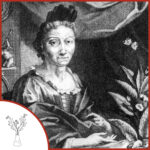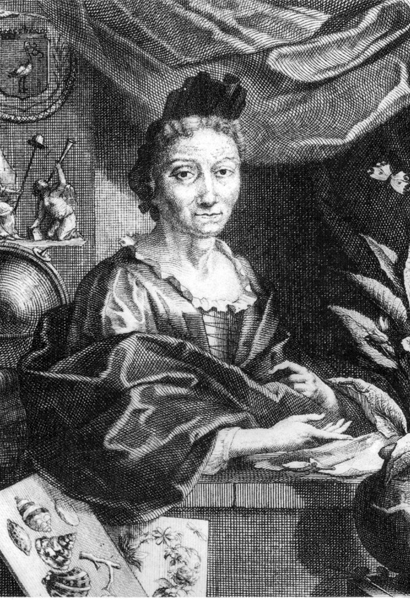

Birth: April 2, 1647
Death: January 13, 1717
Specialty: Entomology
Major Contributions:
Mounted one of the first proper scientific expeditions
Created classifications for insects
Published detailed studies on insects including illustrations
Encouraged by her stepfather to learn how to paint and draw, Maria Sibylla Merian [sah-bill-ah marian], was not only a world-class illustrator but is also considered to be among the most significant contributors to entomology.
Born in Germany in 1647, she was fascinated by insects for most of her youth. By observing the development of 186 species she was able to refute the prevailing theory of spontaneous generation of the insects and explain the metamorphosis process of the butterfly so that more people understood what was happening. In 1675 she published her first collection of 3 sets of 12 plates of natural illustrations which she would combine five years later into one set entitled, Neues Blumenbuch, [noy-ass bloom-ahn-bach] featuring floral engravings that were equally scientifically accurate and beautiful.
She continued to study insects, especially butterflies, and noted that each stage of the change from caterpillar to butterfly depended on a small number of plants for its nourishment. She noted that as a consequence the eggs were laid near these plants. She also created her own classification system separating the daytime butterflies from the nighttime moths.
Receiving permission from the city of Amsterdam to travel to the Dutch colony of Suriname, she sold over 250 of her paintings to finance what is considered to be one of the first expeditions rooted solely in scientific endeavors. While in South America she carefully observed the insect and plant life in the region, using their indigenous names. She spent two years on this trip, returning to Europe after she contracted malaria. She published her most famous work, Metamorphosis Insectorum Surinamensium, about the insects of Suriname in 1705.
The book became popular with high society due to it being written in Dutch but was not taken seriously by the scientific community because it wasn’t in the “proper” language of science, Latin. Merian opened a shop where she sold specimens until suffering from a stroke in 1715. She was unable to work and passed away in 1717. Her daughter published a final collection of her work after her death entitled Erucarum Ortus Alimentum et Paradoxa Metamorphosis. Merian has been honored on German currency, stamps, a ship, and a Google doodle.
Written by Angela Goad
Sources:
Botanical Art and Artists: About Maria Sibylla Merian – Botanical & Natural History Artist
National Museum of Women in the Arts: Maria Sibylla Merian
Wikipedia: Maria Sibylla Merian
See Also:
Metamorphosis Insectorum Surinamensium (In German)
Google Doodle: Maria Sibylla Merian’s 366th Birthday
